Yesterday, I laid out ten defining moments from the Second Age of Middle-earth that will probably comprise the backbone of the Amazon Prime The Lord Of The Rings series coming to streaming in the near future: the misleading title would have you believe that Amazon is simply adapting J.R.R. Tolkien’s iconic and beloved novels (and I’m sure Amazon is fine with that, if it lures you into watching their series), but this is anything but a retelling of the author’s most popular work. Instead, Amazon is going to be telling some of the less well-known stories from the depths of Middle-earth’s extensive history, specifically the Second Age.
But because J.R.R. Tolkien wrote so little about the Second Age, and so much of what he did write was only published posthumously by his son, many people don’t have a very clear idea of what to expect from the series, which is why, today, I’ve compiled a list of the top ten things that I want to see in The Lord Of The Rings. These aren’t necessarily things that will happen, but I feel that each one is a necessary element that would add whole new layers to our understanding of Middle-earth.
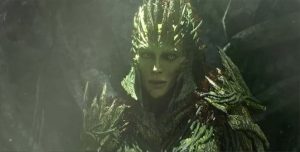
10: The Ent And The Entwife. While it would obviously be a non-canonical answer to an age-old question, it’s about time we finally saw what happened to the mysterious Entwives after Sauron swept through their gardens with a destructive slash-and-burn policy, near the end of the Second Age. By the time of Frodo Baggins’s quest, these gardens had been deserted for so long they were only known as the Brown Lands: but in Amazon’s The Lord Of The Rings, we have a chance to see a flourishing Entish culture, maybe even some of the elusive Ent children that were so rare in later days. The Entwives passed on their agricultural knowledge to humans during the Second Age, giving them a narrative purpose (remember that one of the rumored main characters is said to be a farmer). As for what happens to them after Sauron attacks, well, that’s up to Amazon to decide: if they want to be really controversial, they could have them escape to the Land of Rhûn, backing up the claims of a recently uncovered map.

9: The Blue Wizards. This is a complicated subject. The two Blue Wizards are usually believed to have arrived on the shores of Middle-earth at the same time as their more well-known brethren – characters like Gandalf, Saruman and Radagast – and to have failed in their purpose, becoming servants of Sauron or founding mystic cults in lands like Harad and Rhûn. But one version of the story, written later in Tolkien’s life (and thus, by the generally-accepted laws of determining canon, the more accurate version), outlines a scenario where the Blue Wizards, individually named Alatar and Pallando (or Morinehtar and Rómestámo), entered Middle-earth during the Second Age, and journeyed far into the East and South, helping to disrupt Sauron’s plans and playing a crucial part in his defeat, both in the Second and Third Ages. In this version, they enter Middle-earth at about the same time as Glorfindel, a resurrected Elf of Gondolin sent back from death to aid in Elrond and Gil-galad’s defense of the citadel of Imladris (Rivendell). This is the version I want to see: while one of the two Wizards could potentially be corrupted by Sauron or otherwise fall from their higher purpose in the series, I’d like to see them depicted in a more heroic light – and since they’ll be journeying into lands more akin to the Middle East and Central Asia than Western Europe, I’d want to see them played by actors of color: specifically women of color, if that’s possible.
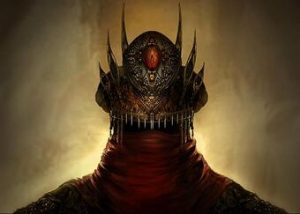
8: The Haradrim. In all of Tolkien’s legendarium, only two Haradrim are mentioned by name – and both come from the Second Age. Herumor and Fuinur were both Black Númenórean lords of Harad who fought alongside Sauron in the War of the Last Alliance. In the Amazon Prime series, we should see storylines – entire story arcs – set in the desert country, providing a welcome change from the more familiar lands of Eriador and Mordor, and giving us more racial diversity in Middle-earth. Helped by the subtle efforts of the Blue Wizards, we could see heroic Haradrim characters rise up against their villainous kings and resist Sauron’s influences.
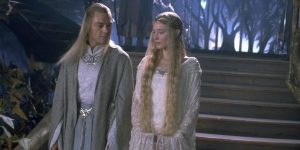
7: Galadriel And Celeborn. Even Tolkien himself never came to a conclusion on how Galadriel and Celeborn met, what they did in the First Age, how they came to Middle-earth, or what they did when they got there. In the scraps of his unfinished tales, the two characters are constantly changing: at one point, they’re the parents of a son and daughter, but later they only had a daughter; sometimes Celeborn was a Telerin Elf, other times Sindarin; in some versions Galadriel rebelled against the Elf, but in others she left Valinor for different reasons. Amazon can’t adapt every variation on the same story. My suggestion is that, rather than try to stick to just one version of the tale, they’ll take all the best parts from many different versions and piece them together into one cohesive whole. Just so long as we see the Galadriel who was obsessed with Dwarves and the Celeborn who stayed behind in Eregion with Sauron rather than travel through the Dwarven city of Khazad-dûm, I’m good.
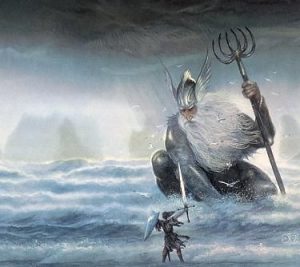
6: Valinor And Valar. Amazon will be limited by the restrictions placed upon them by the Tolkien Estate, but if they want to fully flesh out the ancient history of Middle-earth in a way it never has been before, they’d be wise to make it clear that a number of gods, demigods and angels inhabit the world of Arda. Even Peter Jackson hinted at this, during Gandalf’s rebirth. With the Númenóreans constantly praising Maiar like Uinen and Ossë, the Elves worshiping Varda, and the eagle messengers of Manwë showing up to forewarn people of impending doom, there are many opportunities to slip in references to these deities. As for Valinor, the Blessed Realm of the Valar, there’s no way to tell the story of the Fall of Númenór without seeing that far green country at least once, through the eyes of the would-be conqueror Ar-Pharazôn, just before he and his army get crushed under a mountain.

5: Different Elves. In previous adaptations of the Tolkien mythos, there haven’t been many obvious distinctions drawn between the different Elven cultures, but in the Second Age, such a distinction will be necessary with so many characters sharing the screen. The High Elves or Eldar are the ones we’ll probably be following most closely: after being forced to migrate en masse from their ruined homelands in Beleriand, the High Elves settle down in the vast lands of Middle-earth, often uprooting the defenseless Silvan Elves from their own homes. Silvan Elves whom we might see include Amroth, the Prince of Lórien; Nimrodel, a notable Lórien resident and inventor of the flet treehouse; and a young Thranduil then living in Amon Lanc (which would later be overrun by Sauron’s forces and turned into Dol Guldur) with his father, the proud king Oropher. Though the simmering resentment the Silvan Elves feel toward the High Elves never boils over into aggression in Tolkien’s works, there’s certainly room for Amazon to go there with their story: not only to give the Elves some interesting dynamics, but to parallel the similar situation between the Númenóreans and the Men of Middle-earth.
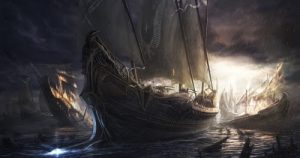
4: Númenórean Imperialism. Tolkien himself went on the record as being anti-British Empire, and in his stories, imperialism is never viewed in a positive light: the Númenórean desire to rule over the “lesser” Men of Middle-earth during what was already the heyday of their power led them to ever bloodier, more brutal conquests that in turn led them straight to a watery end. To stay true to Tolkien, depicting the Númenóreans faithfully will require Amazon Prime to turn the initial heroes of the story into the villains, as the once peaceful culture devolves into an ambitious, power-hungry assortment of misguided kings and warmongering military leaders. It’s not going to be pretty.
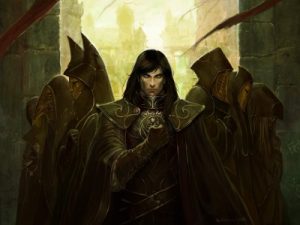
3: The Refusal Of The Gift. One of the darkest – but most crucial – elements that Amazon will have to nail down in their series is the Númenórean society’s fear of death. In the beginning of the Second Age, the Men of Númenor are long-lived, surviving for hundreds of years and being given the ability to basically die whenever they feel like it, thus “giving up the gift” – that being the gift of death that was given to them by Eru, Middle-earth’s ultimate deity. But as the Second Age wanes and Númenor tries to extend its reach around the world, killing and pillaging in the process, these Men begin to grow jealous of the immortal Elves, and they become more obsessed with their own inevitable mortality than the years they have left to live. This is the volatile situation that Sauron the Deceiver will enter and masterfully manipulate to his own advantage – it’s critical that we understand why the Númenóreans would be so willing to listen to his lies.

2: Aldarion And Erendis. There’s absolutely no better place to begin foreshadowing Númenor’s downfall than in the story of Aldarion and Erendis. One of the only complete stories from the Second Age that Tolkien ever wrote, this tragedy tells the complicated tale of a long-lived Númenórean Prince named Aldarion who falls in love with a woman, Erendis, whose lifespan is far shorter than his own. Aldarion disappears on voyages to Middle-earth that last for years, sometimes even decades, as he establishes colonies, starts wars, and fells entire forests for timber, caring little for his duties back at home. Erendis, meanwhile, after openly declaring herself to be hateful of the Sea and a foe of the Maia Uinen, is forced to watch and wait for her sea-faring husband, while precious time slips through her fingers, robbing her of the best years of her life. Not only does it shed light on the interesting gender dynamics of the Second Age, but, with just a little tinkering, it could become an effective prelude to all of Númenor’s later troubles, with Aldarion and Erendis representing both the imperialistic tendencies and the fear of death that would combine to bring about the empire’s downfall.
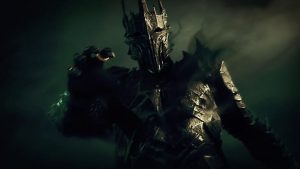
1: The Lord Of The Rings. Confused? Well, don’t be, because what you might never have considered is that the title of the novel, which refers – obviously – to Sauron, is perhaps still just as fitting a title for the Amazon Prime series. After all, Sauron is going to be the prime antagonist of the show, and Amazon will give us an opportunity to finally see his true power. Throughout The Lord Of The Rings (the novel, not the series: I can see why using that title would be confusing), we’re told that Sauron reclaiming his One Ring would cause a second darkness, and give the Maia almost unlimited power – but in the Second Age, when Sauron did have the Ring and was still busy causing his first darkness, he was defeated (albeit temporarily) by one lucky guy with a broken sword. Amazon has a chance to show us, for the first time, what the Ring is actually capable of doing when bound around its dread master’s finger. I’m not saying I want to see the Lord of the Rings summon whirlwinds of fire or rain ruinous lightning down on his foes or anything…but no, actually, that’s exactly what I’m saying.
So what do you think? Would you care to see any of these ten things, or does it not matter to you what ends up in the series, so long as it’s good? Share your own thoughts, theories and opinions in the comments below!